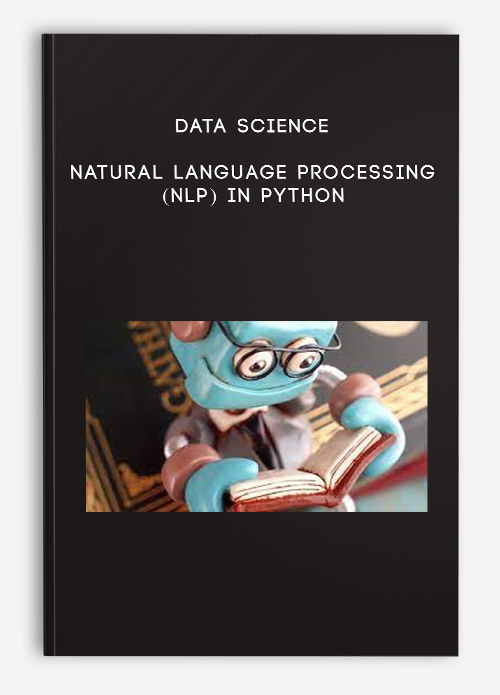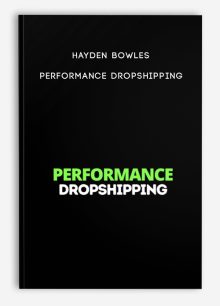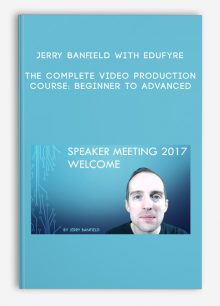Data Science Natural Language Processing (NLP) in Python
$129.00 $42.00

Data Science Natural Language Processing (NLP) in Python
Get Data Science Natural Language Processing (NLP) in Python on Salaedu.com
Description:
In this course you will build MULTIPLE practical systems using natural language processing, or NLP – the branch of machine learning and data science that deals with text and speech. This course is not part of my deep learning series, so it doesn’t contain any hard math – just straight up coding in Python. All the materials for this course are FREE.
After a brief discussion about what NLP is and what it can do, we will begin building very useful stuff. The first thing we’ll build is a cipher decryption algorithm. These have applications in warfare and espionage. We will learn how to build and apply several useful NLP tools in this section, namely, character-level language models (using the Markov principle), and genetic algorithms.
The second project, where we begin to use more traditional “machine learning”, is to build a spam detector. You likely get very little spam these days, compared to say, the early 2000s, because of systems like these.
Next we’ll build a model for sentiment analysis in Python. This is something that allows us to assign a score to a block of text that tells us how positive or negative it is. People have used sentiment analysis on Twitter to predict the stock market.
We’ll go over some practical tools and techniques like the NLTK (natural language toolkit) library and latent semantic analysis or LSA.
Finally, we end the course by building an article spinner. This is a very hard problem and even the most popular products out there these days don’t get it right. These lectures are designed to just get you started and to give you ideas for how you might improve on them yourself. Once mastered, you can use it as an SEO, or search engine optimization tool. Internet marketers everywhere will love you if you can do this for them!
This course focuses on “how to build and understand”, not just “how to use”. Anyone can learn to use an API in 15 minutes after reading some documentation. It’s not about “remembering facts”, it’s about “seeing for yourself” via experimentation. It will teach you how to visualize what’s happening in the model internally. If you want more than just a superficial look at machine learning models, this course is for you.
“If you can’t implement it, you don’t understand it”
Or as the great physicist Richard Feynman said: “What I cannot create, I do not understand”.
My courses are the ONLY courses where you will learn how to implement machine learning algorithms from scratch
Other courses will teach you how to plug in your data into a library, but do you really need help with 3 lines of code?
After doing the same thing with 10 datasets, you realize you didn’t learn 10 things. You learned 1 thing, and just repeated the same 3 lines of code 10 times…
Suggested Prerequisites:
Python coding: if/else, loops, lists, dicts, sets
Take my free Numpy prerequisites course (it’s FREE, no excuses!) to learn about Numpy, Matplotlib, Pandas, and Scikit-Learn, as well as Machine Learning basics
Optional: If you want to understand the math parts, linear algebra and probability are helpful
WHAT ORDER SHOULD I TAKE YOUR COURSES IN?:
Check out the lecture “Machine Learning and AI Prerequisite Roadmap” (available in the FAQ of any of my courses, including the free Numpy course)
Who this course is for:
Students who are comfortable writing Python code, using loops, lists, dictionaries, etc.
Students who want to learn more about machine learning but don’t want to do a lot of math
Professionals who are interested in applying machine learning and NLP to practical problems like spam detection, Internet marketing, and sentiment analysis
This course is NOT for those who find the tasks and methods listed in the curriculum too basic.
This course is NOT for those who don’t already have a basic understanding of machine learning and Python coding (but you can learn these from my FREE Numpy course).
This course is NOT for those who don’t know (given the section titles) what the purpose of each task is. E.g. if you don’t know what “spam detection” might be useful for, you are too far behind to take this course.
Business online course
Information about business:
Business is the activity of making one’s living or making money by producing or buying and selling products (such as goods and services).
[need quotation to verify] Simply put, it is “any activity or enterprise entered into for profit.
It does not mean it is a company, a corporation, partnership, or have any such formal organization, but it can range from a street peddler to General Motors.”
Having a business name does not separate the business entity from the owner, which means that the owner of the business is responsible and liable for debts incurred by the business.
If the business acquires debts, the creditors can go after the owner’s personal possessions.
A business structure does not allow for corporate tax rates. The proprietor is personally taxed on all income from the business.
1 review for Data Science Natural Language Processing (NLP) in Python
Add a review Cancel reply
Related products
Business & Marketing
Business & Marketing
Jerry Banfield with EDUfyre – The Complete Video Production Course: Beginner to Advanced
Business & Marketing










king –
“We encourage customers to contact Customer Service and think twice before making payment. All course contents will be similar to what is from the author.”
Thank you!